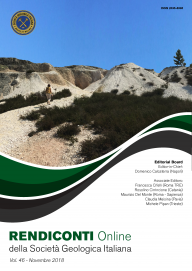
PM10: a potential source of secondary raw materials
Sara Marchionni (1), Martina Casalini (1), Francesco Capecchiacci (1,3), Matteo Zoppi (1,2), Jacopo Cabassi (3), Franco Tassi (1,3), Orlando Vaselli (1,3), Giovanni Pratesi (1), Luciano Giannini (1,3), Stefania Venturi (3), Stanislav Strekopytov (2), Maurizio Ulivi (1), Eleonora Braschi (3), Furio Forni (4), Roberto Scodellini (4) & Simone Tommasini (1)
(1) Università degli Studi di Firenze, Dipartimento di Scienze della Terra Via Giorgio La Pira 4, 50121 Firenze, Italy.
(2) Department of Science Facilities, the Natural History Museum, Cromwell Road London SW7 5BD, UK.
(3) CNR – Istituto di Geoscienze e Georisorse, sezione di Firenze, Via G. La Pira 4, 50121 Firenze, Italy.
(4) Regione Toscana, Politiche Ambientali, Energia e Cambiamenti Climatici, Via di Novoli 26, 50127 Firenze, Italy.
Corresponding author e-mail: simone.tommasini@unifi.it.
Abstract
Keywords
Get Full Text